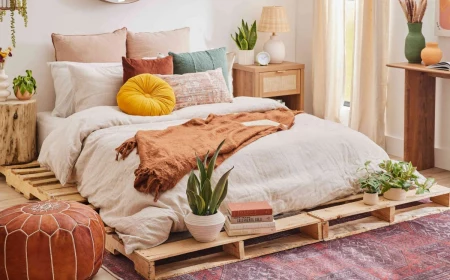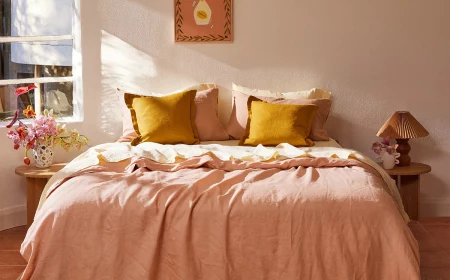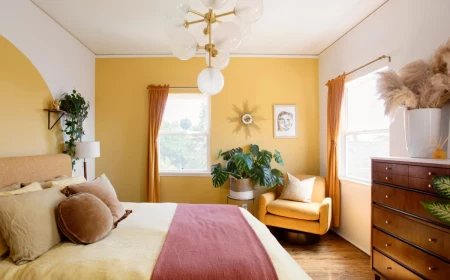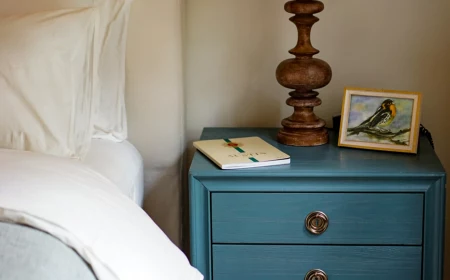Stop Sleeping Badly: The Ultimate Guide to Choosing a Duvet Cover
After years in the textile world, I’ve seen one simple truth play out over and over: the fabric touching your skin at night can make or break your sleep. Seriously. I’ve helped everyone from boutique hotels to regular folks furnish their bedrooms, and the conversation always comes back to the duvet cover.
In this article
So many people think of it as just a decorative sack for their comforter. Honestly, that’s a huge misunderstanding that can lead to years of clammy, uncomfortable nights and wasted money. Let’s set the record straight.
A duvet cover isn’t just for looks; it’s a functional piece of gear. It protects your duvet (which can be a serious investment), regulates your temperature, and keeps your bed clean. Choosing the right one is less about matching your curtains and more about understanding the stuff it’s made of. This guide is all the practical, hands-on knowledge you need to pick a cover you’ll love for years, not just for a season.
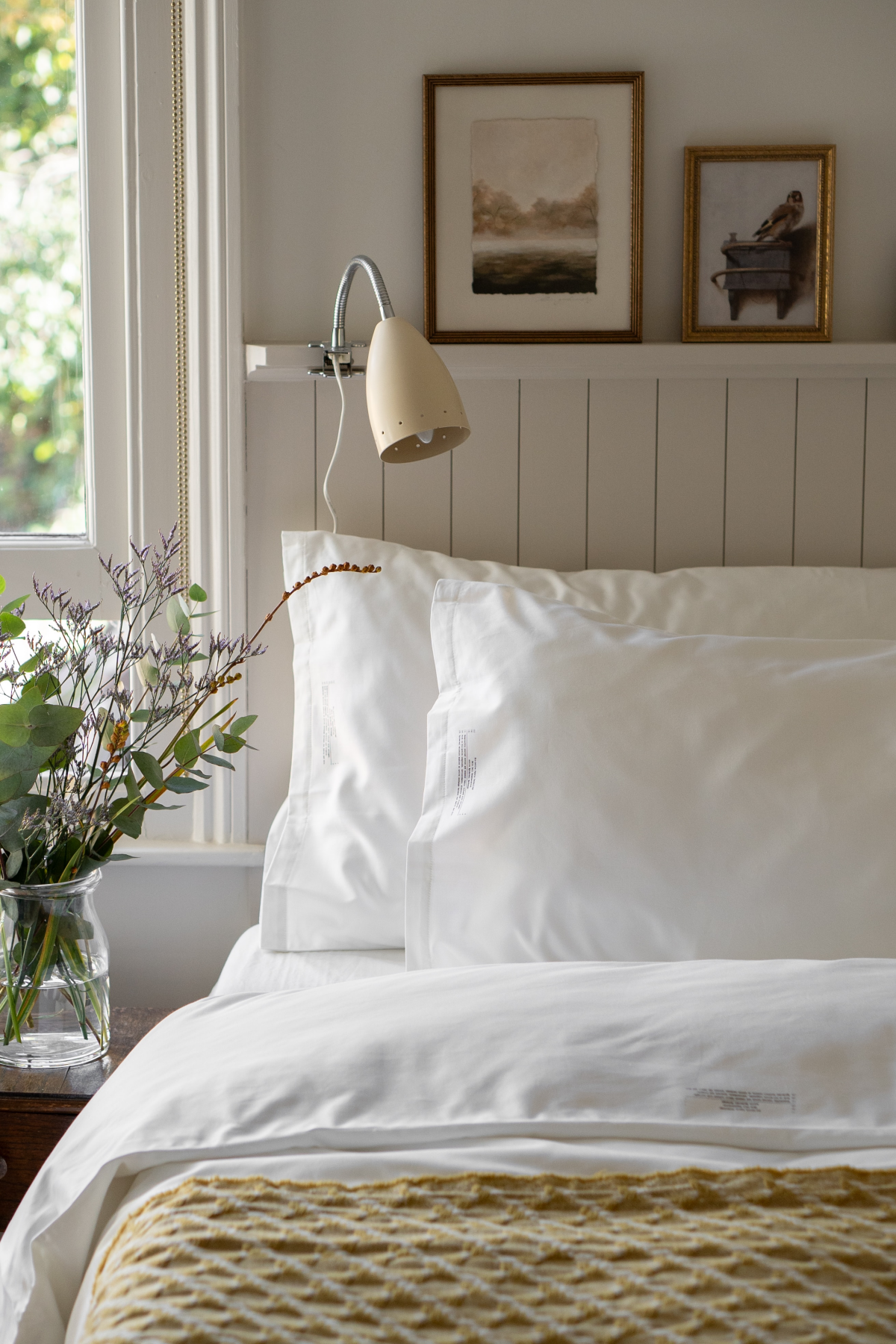
So, What’s a Duvet Cover Really For?
Think of a quality duvet insert—especially one filled with down or wool—like a nice piece of furniture. You wouldn’t leave a beautiful wood table unprotected, right? The cover is the bodyguard for your expensive insert. It guards against sweat, skin oils, dust, and the occasional coffee spill.
Let’s be real, cleaning a big, fluffy duvet is a nightmare. Doing it at home can ruin the fill, and professional cleaning can cost a pretty penny. A duvet cover, though? You just zip it off and throw it in the wash with your sheets. It’s why hotels can keep their beds so fresh. For you, it means a cleaner bed with way less effort, and it dramatically extends the life of your duvet. A good cover might seem pricey, but it’s a bargain compared to replacing a ruined comforter.
The Nitty-Gritty: Let’s Talk Fabrics
The material is, without a doubt, the most important factor. It dictates the feel, breathability, and durability. Marketing terms can be super confusing, so let’s break down what actually matters.
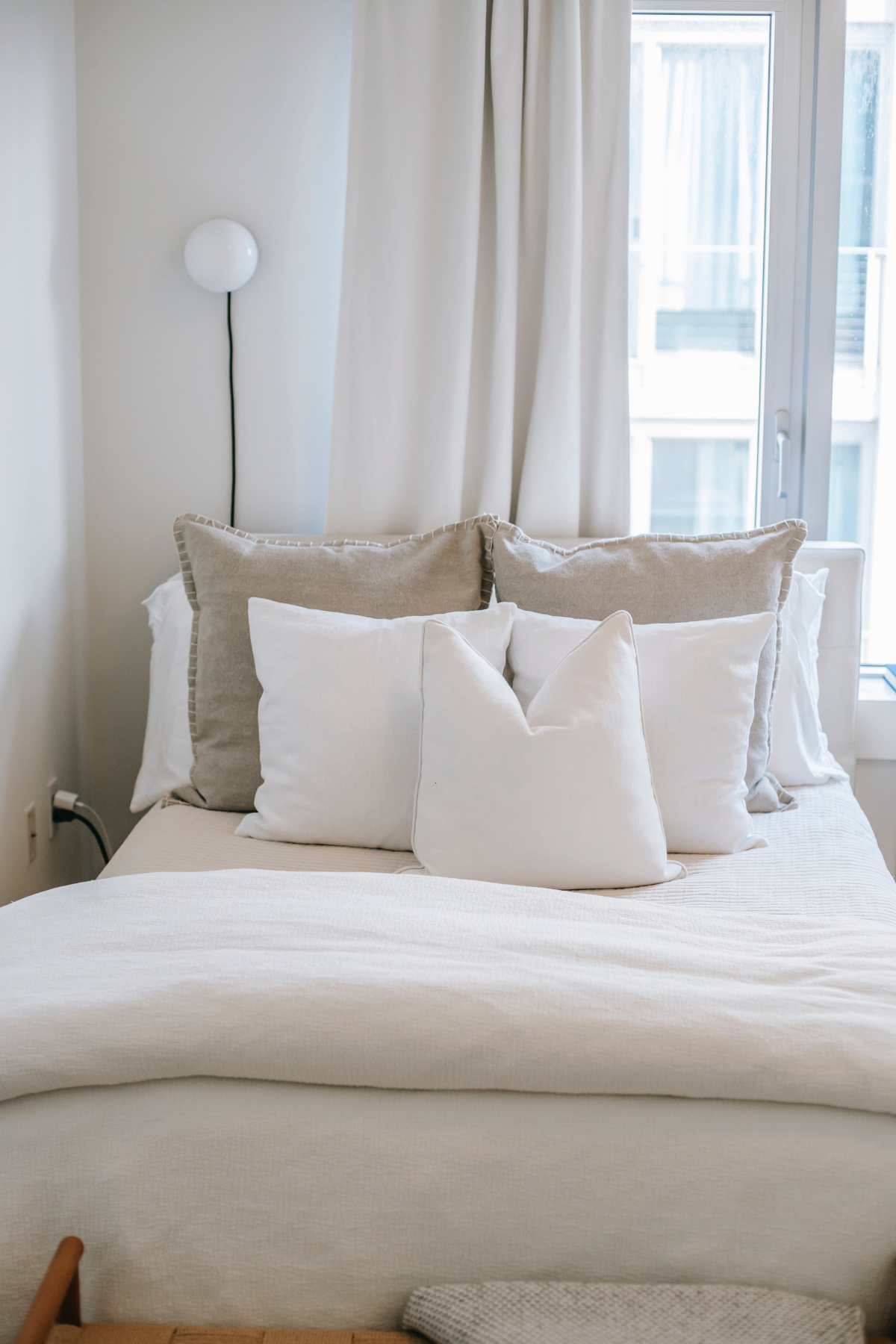
Cotton: The Gold Standard
Cotton is the king of bedding for a reason: it’s breathable, durable, and gets softer with every wash. But here’s the secret: not all cotton is the same. It all comes down to the fiber length, or “staple.”
- The Good Stuff (Long-Staple Cotton): Fibers like those found in Egyptian or Pima cotton are longer. This creates a yarn that’s smoother and stronger, which means the fabric feels incredible and resists pilling. This is what you want to look for.
- The Budget Stuff (Short-Staple Cotton): This is what most cheap bedding is made of. The shorter fibers create a coarser fabric that’s more likely to pill and wear out fast.
Once you have good cotton, the weave determines the final feel. You’ll mostly see two options: percale and sateen.
Percale: Crisp, Cool, and Collected
This is a simple one-over, one-under weave that creates a lightweight, super-breathable fabric with a matte finish. Think of a classic, crisp hotel sheet. It feels cool to the touch, making it a dream for hot sleepers or warm climates. It does wrinkle a bit, but that gives it a relaxed, lived-in charm. For a quality Queen-size percale cover, expect to pay between $80 and $150. It’s a fantastic investment.
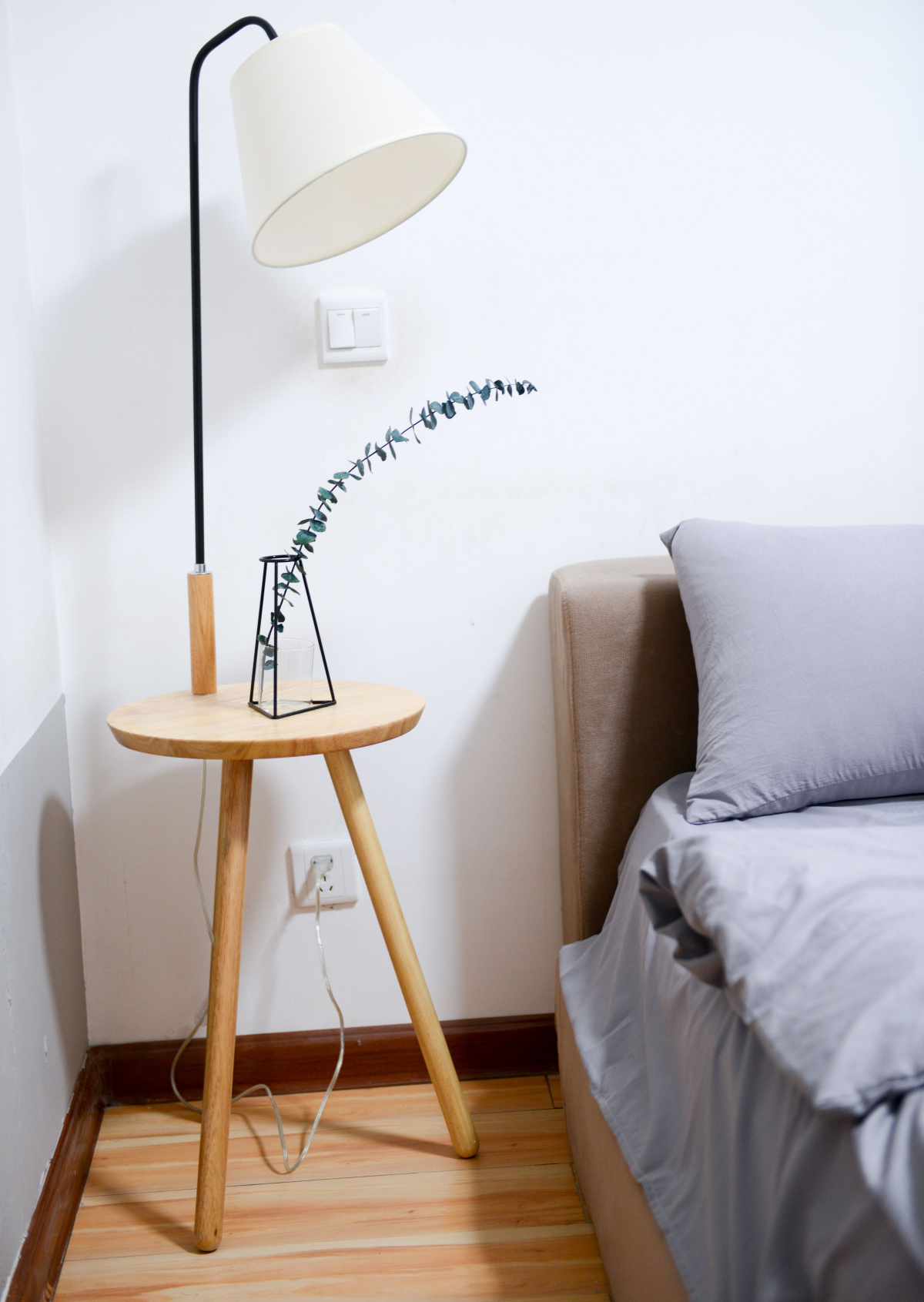
Sateen: Silky, Smooth, and Sheeny
This weave puts more threads on the surface, resulting in a silky-smooth feel with a subtle sheen. Sateen drapes beautifully and resists wrinkles better than percale. The trade-off? It’s a little less breathable, so it feels cozier and warmer. Because of its structure, it can be slightly more prone to snagging from pet claws or jewelry. A good sateen cover will run you about the same as percale, maybe slightly more, in the $90 to $170 range.
Oh yeah, a quick word on thread count: don’t fall for the hype. A sky-high thread count doesn’t mean a thing if it’s made from cheap, short-staple cotton. A 300-thread-count cover made from quality long-staple cotton will feel a million times better and last infinitely longer than a flimsy 1,000-thread-count one. Quality of fiber> quantity of threads. Always.
Linen: The Effortlessly Chic Powerhouse
Linen, made from flax fibers, is a total game-changer. It’s incredibly durable and a fantastic thermoregulator—it keeps you cool in the summer and warm in the winter. Plus, it just gets softer and better with every single wash. A good linen duvet cover is something you could genuinely use for decades.
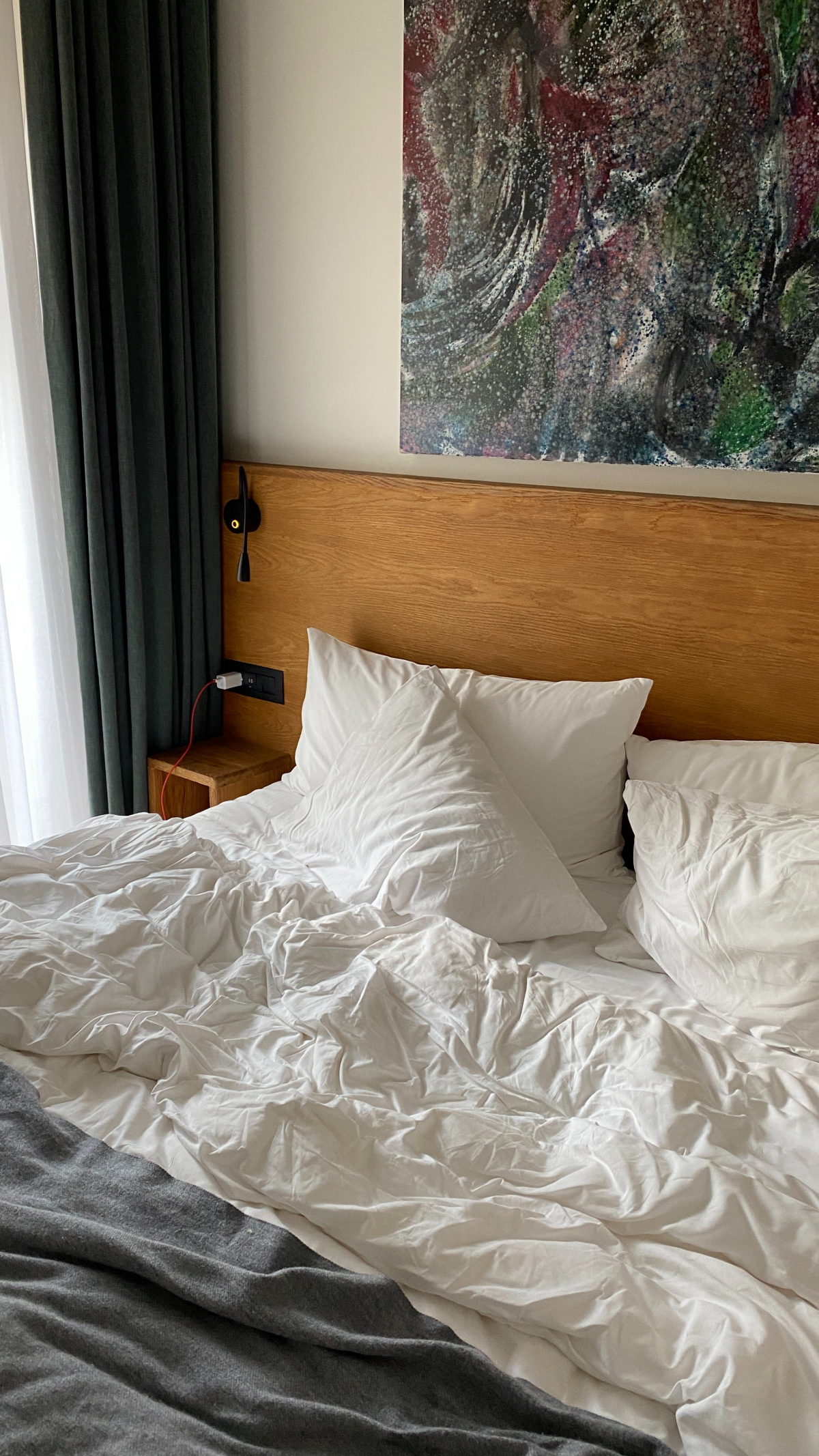
But you have to be honest with yourself. Linen wrinkles. A lot. It’s a feature, not a bug! If you crave that perfectly smooth, pressed-bed look, linen will drive you insane. But if you love a relaxed, earthy, and effortlessly chic vibe, you’ll adore it. High-quality, 100% linen is an investment, usually costing between $180 and $300+ for a Queen size.
Tencel (Lyocell): The Modern Eco-Warrior
Tencel is a brand name for lyocell, a fabric made from sustainably sourced eucalyptus wood pulp. It’s incredibly soft and smooth, with a fluid drape that’s even silkier than sateen. It’s also amazing at wicking moisture, making it another great pick for hot sleepers. The only real downside is that it can be a bit more delicate than cotton or linen over the long haul, so you have to be gentle with it. Price-wise, it sits somewhere between high-end cotton and linen, around $120 to $220.
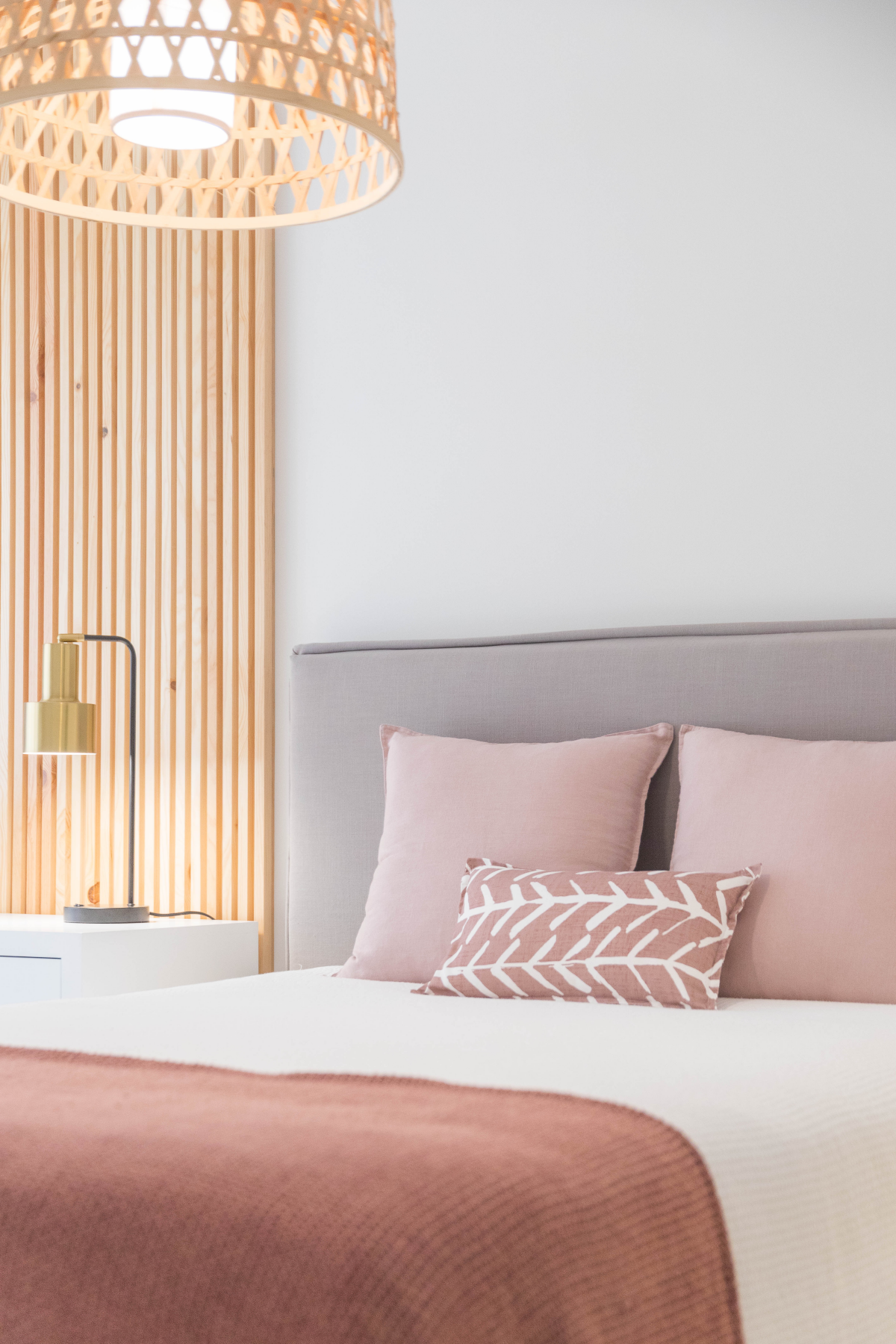
Quick Action Step: Do This Before You Shop!
Okay, stop what you’re doing. Go find a tape measure and get the exact length and width of your duvet insert. Seriously, write it down and save it in your phone right now. There are NO universal standards for bedding sizes. A “Queen” from one brand can be inches different from another. Knowing your insert’s exact dimensions is the single most important step to avoiding a sloppy, frustrating fit.
Common Mistakes to Avoid (You’ll Thank Me Later)
I see people make the same few mistakes over and over again. Here’s how to sidestep them:
- Buying on thread count alone. As we covered, it’s a marketing gimmick. Focus on the quality of the material (long-staple cotton, 100% linen, etc.) first.
- Ignoring your insert’s measurements. A cover that’s too big will look sloppy and let the duvet bunch up, even with ties. Aim for a cover that’s the same size or even an inch or two smaller for a full, snug look.
- Choosing a fabric that doesn’t fit your lifestyle. If you despise wrinkles, do not buy a linen duvet cover, no matter how good it looks online. You’ll just end up miserable.
- Forgetting to check the inside. The real quality of a cover is revealed on the inside. Flimsy zippers and messy seams are a huge red flag.

Pro Inspection: The Details That Scream Quality
When I’m vetting a duvet cover, I look for a few key details. You should too.
Closures: Buttons are classic and repairable. Zippers are more secure but make sure it’s a sturdy, high-quality one—a broken zipper basically totals the cover. Avoid cheap, flimsy plastic zippers at all costs.
Interior Ties: This is NON-NEGOTIABLE. A good cover must have ties in all four corners to hold your insert in place. Without them, you’re doomed to the “duvet burrito,” where the comforter ends up in a sad lump at the bottom.
A lesser-known trick: The absolute best duvet covers, especially in Queen and King sizes, also have ties halfway down each side. It’s a small detail that makes a world of difference and signals a truly premium product.
Where to Look? You don’t have to spend a fortune, but you need to know where to look. For good examples of quality materials, check out online brands like Parachute or Brooklinen. You can also find excellent options in the higher-end collections at stores like Pottery Barn or even Target if you know what to look for.
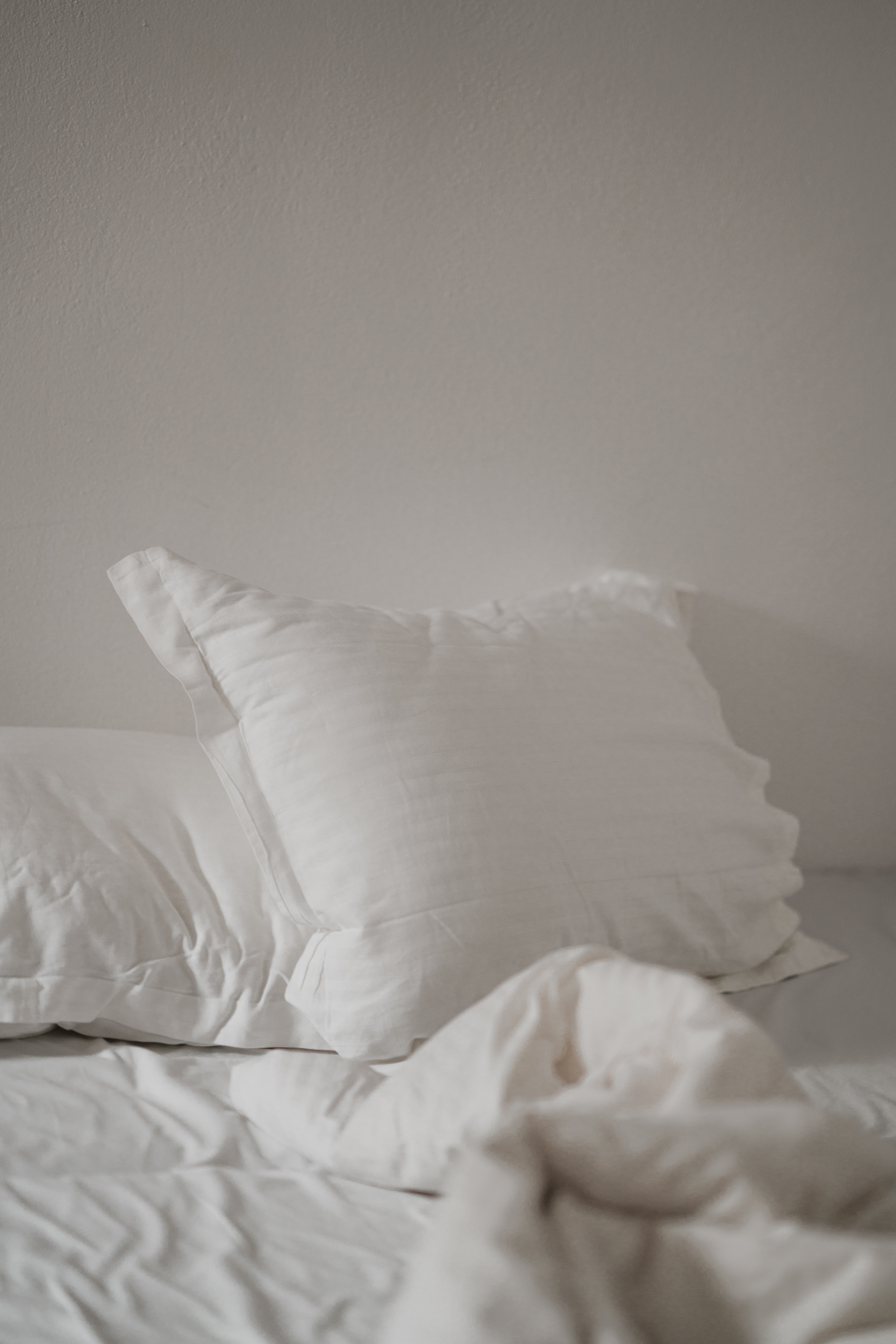
Living With Your Duvet Cover: Tips & Tricks
Okay, you bought a great cover. Now what?
The Great Top Sheet Debate: In much of Europe, people sleep right under the duvet cover and wash it weekly. In North America, many use a top sheet in between. There’s no right answer—it’s pure preference. If you hate making the bed, ditching the top sheet can be a small, daily win.
How to Put It On Without a Fight: Stop trying to stuff it like a pillowcase. The easiest method is called the “burrito” or “California roll” method. Lay the cover inside out, place the insert on top, tie the corners, and roll them up together from the closed end. Then, you just flip the opening over the ends of the roll and unroll it. If you’re a visual person, search “California Roll duvet cover” on YouTube—seeing it once makes it click forever!
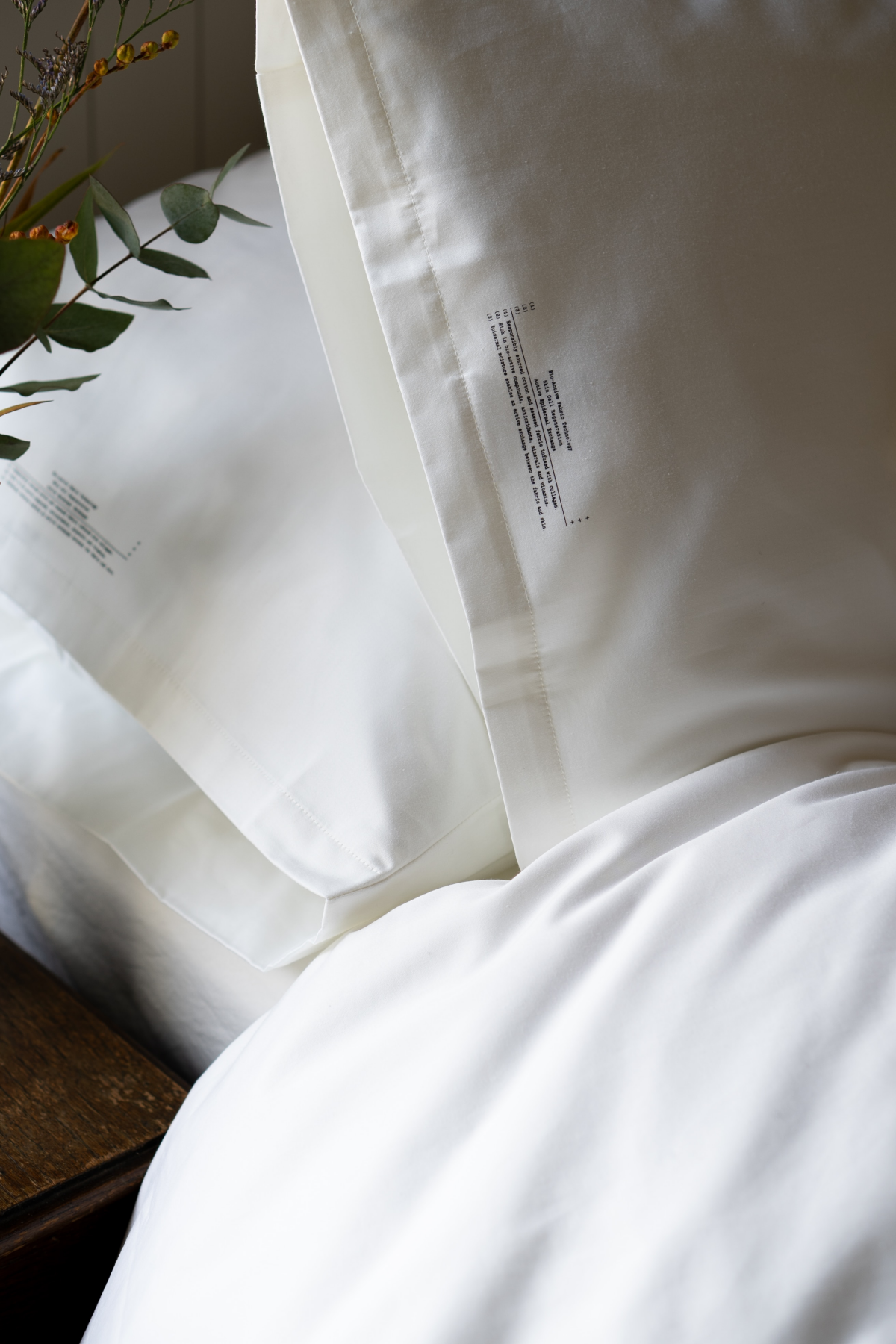
Washing & Care: Heads up! ALWAYS wash a new duvet cover before using it to remove factory chemicals and softeners. After that, wash in cool or warm water (not hot!) and tumble dry on low. High heat is the enemy—it fries the fibers and shortens the life of your bedding. And when you store it, use a breathable cotton bag, not a plastic bin, to prevent mildew and yellowing.
Galerie d’inspiration

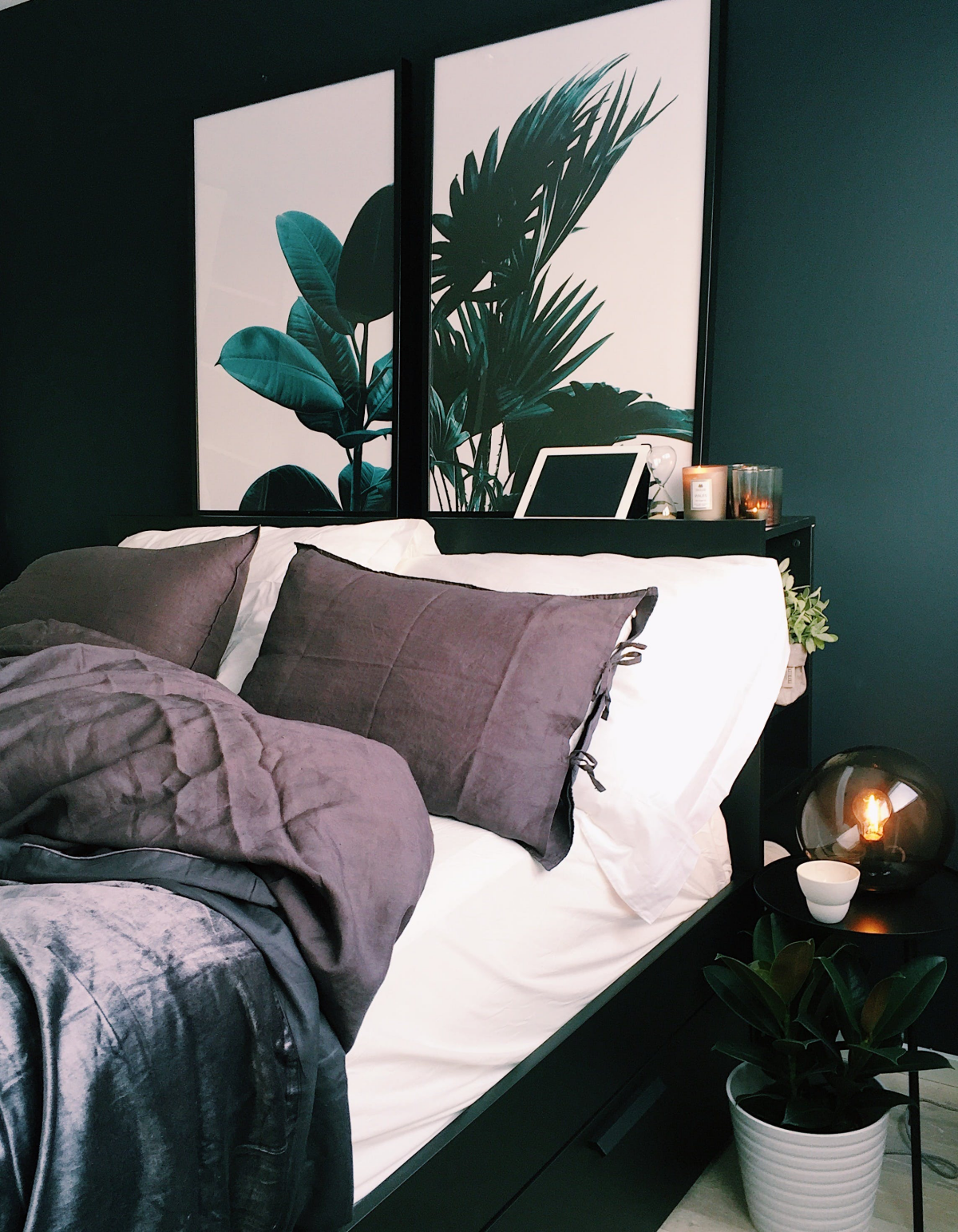
Percale Weave: Imagine the crisp, cool feel of a high-end hotel sheet. That’s percale. It has a simple, tight weave that results in a breathable, matte finish, perfect for those who tend to sleep warm.
Sateen Weave: If you prefer a silkier, smoother touch with a subtle sheen, sateen is your answer. Its weave structure exposes more thread surface, giving it a luxurious drape and a slightly warmer feel against the skin. A great choice for a cozy, elegant bedroom.
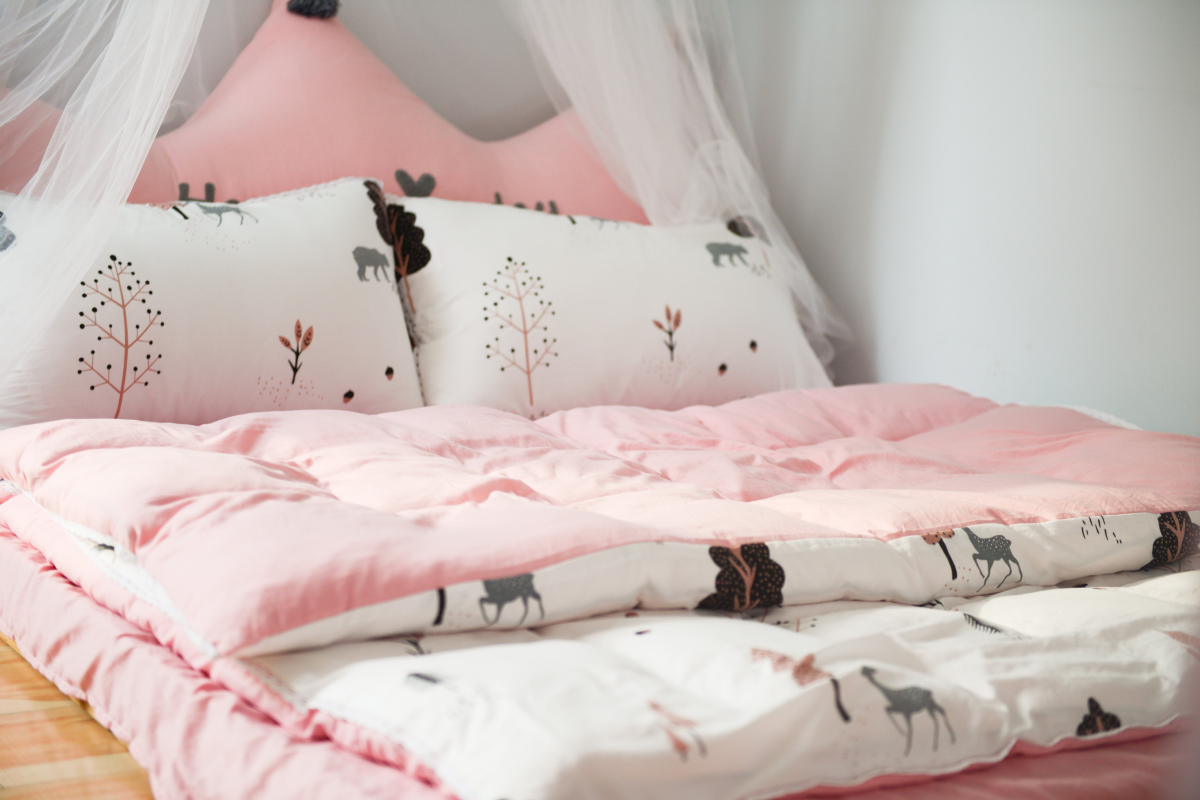
A duvet cover can change the entire mood of a room in less than five minutes.
It’s the single largest block of color or pattern in your bedroom. Feeling bold? A rich botanical print from a brand like Anthropologie can serve as the room’s focal point. Seeking tranquility? A solid, textured cover in a calming earth tone like sand, olive, or terracotta from a brand like The Citizenry can create a serene sanctuary. Don’t be afraid to swap it out seasonally—a light linen for summer, a dark flannel for winter.
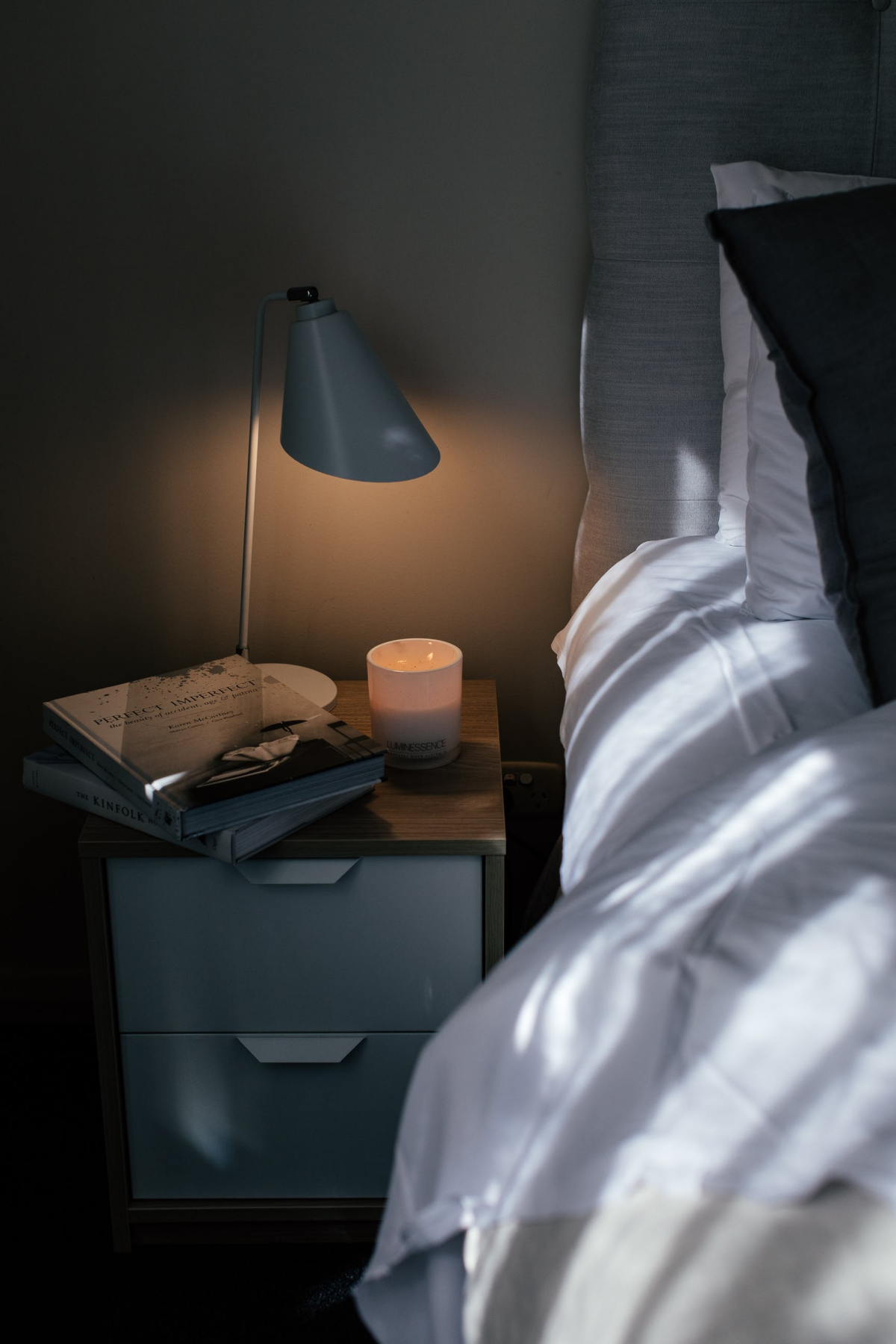
What’s the deal with linen bedding?
Linen, derived from the flax plant, is cotton’s effortlessly chic cousin. Initially, it might feel slightly coarser, but its magic lies in its aging process—it becomes exceptionally soft and supple with each wash. Renowned for its breathability and moisture-wicking properties, it keeps you cool in summer and warm in winter. Its naturally rumpled texture provides a relaxed, inviting look that requires no ironing. It’s a durable investment in casual luxury.
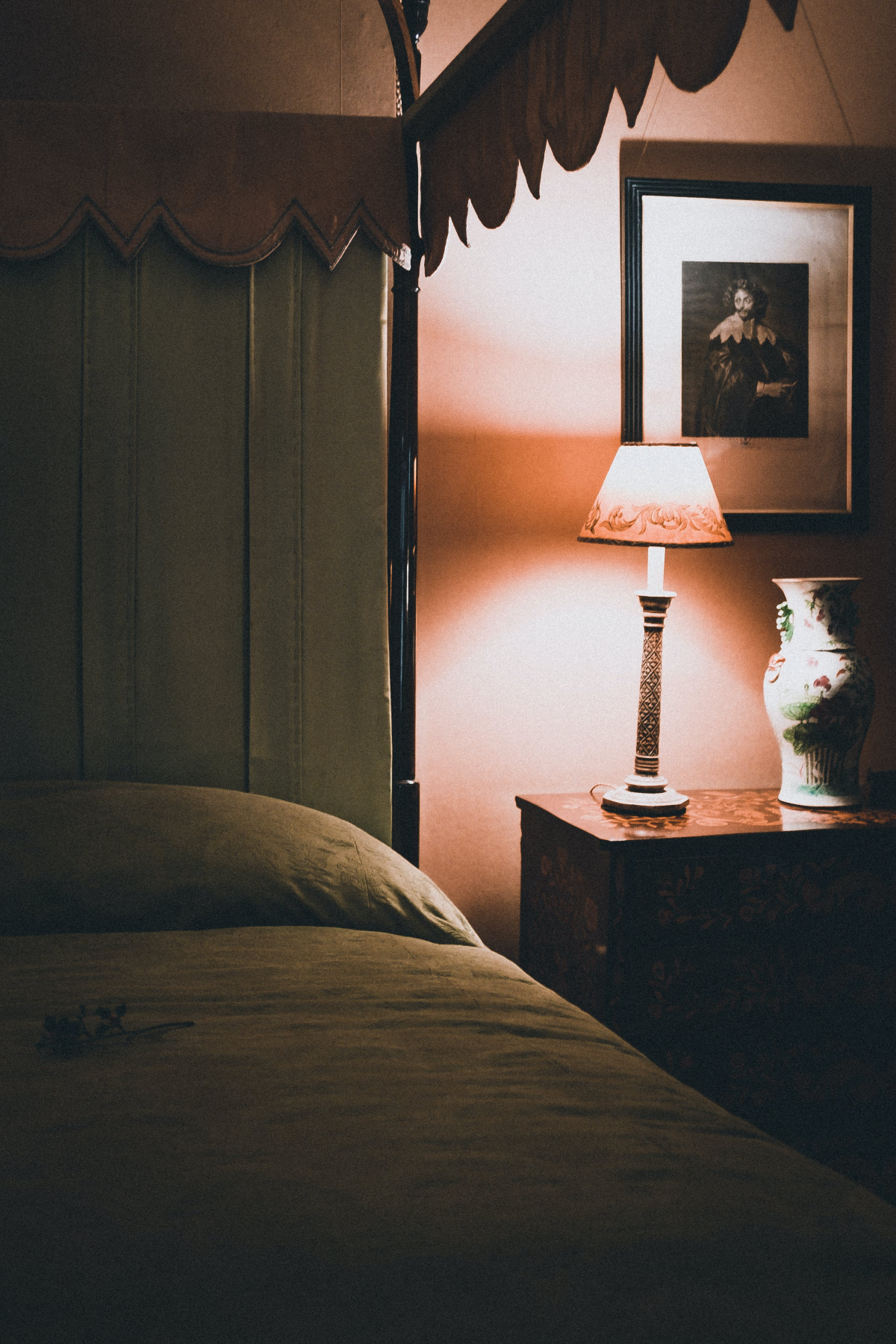
- Check for internal ties. A quality duvet cover should have ties or snaps in all four corners to secure your duvet insert and prevent it from bunching up inside. This is a small detail that makes a huge difference.
- Consider the closure. Buttons can look charming but can be time-consuming and sometimes pop off. A hidden zipper closure, like those often found on Brooklinen or Parachute covers, offers a cleaner look and much greater convenience.
- Don’t get overly fixated on thread count. Fiber quality (like long-staple cotton) and weave type matter far more than an inflated number.
A pro tip for easy washing: To protect the color and fibers of your duvet cover, always turn it inside out before putting it in the washing machine. This minimizes pilling and friction on the outer surface, keeping prints vibrant and fabrics smooth for longer. Wash with similar colors in cool or warm water—not hot—to prevent shrinking and fading.


